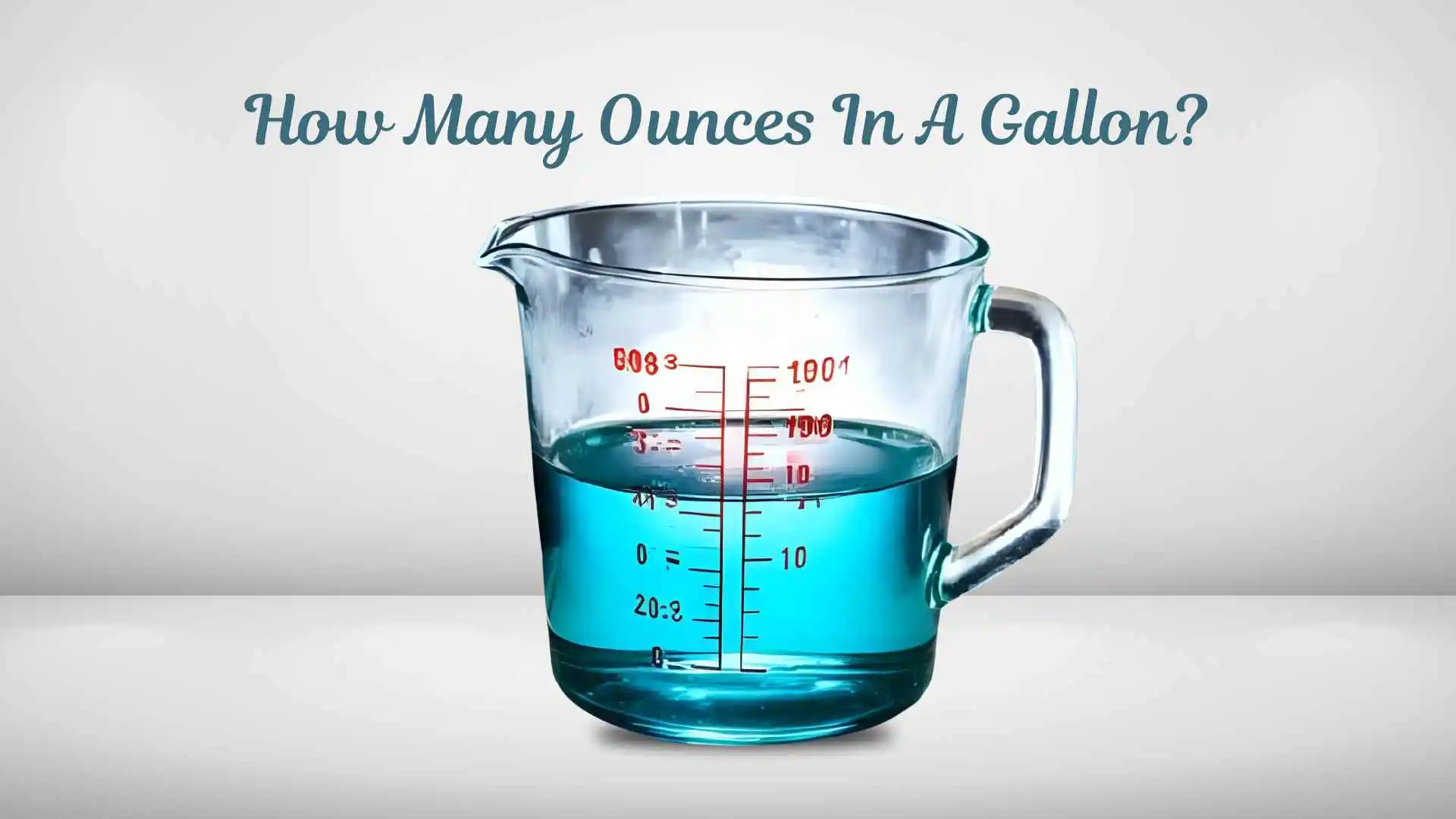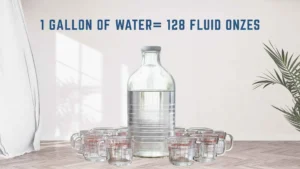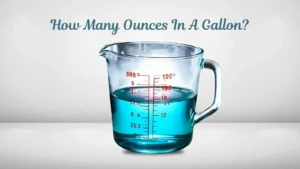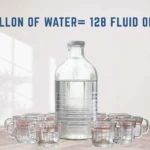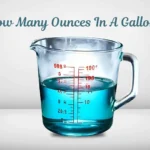If you’ve ever found yourself standing in your kitchen or lab, puzzled by how many ounces are in a gallon, you’re not alone.
Understanding this conversion can make a world of difference.
whether you’re following a kombucha recipe, scaling up a home brew, or just trying to make sense of U.S. customary system and Imperial measurements.
This guide breaks it all down — from fluid ounces vs. dry ounces, to US gallon vs. Imperial gallon, and even the historical roots of these terms. Let’s dive in!
Understanding the Gallon – What It Really Means

A gallon is a unit of volume measurement used primarily in the United States, Britain, and a few other countries. But here’s the catch — not all gallons are created equal.
There are three main types of gallons still in use today:
- U.S. liquid gallon
- U.S. dry gallon
- Imperial gallon (used in the U.K., Canada, and some Commonwealth nations)
Each represents a different volume capacity, and that’s where most of the confusion begins.
US Liquid Gallon
- Equal to 128 U.S. fluid ounces
- Equivalent to 3.785 liters
- Commonly used for liquids like milk, juice, water, and gasoline
US Dry Gallon
- Used for dry materials (like grains or blueberries)
- Equal to 1/8 of a U.S. bushel, which is 231 cubic inches
- Rarely used outside of agriculture
Imperial Gallon (UK, Canada, etc.)
- Equal to 160 Imperial fluid ounces
- Equivalent to 4.546 liters
- Larger than the U.S. gallon by about 20%
💡 Quick Tip: When you see “gallon” on a British label, remember — it’s not the same as the U.S. gallon!
The Ounce – Fluid, Dry, and Weight Explained
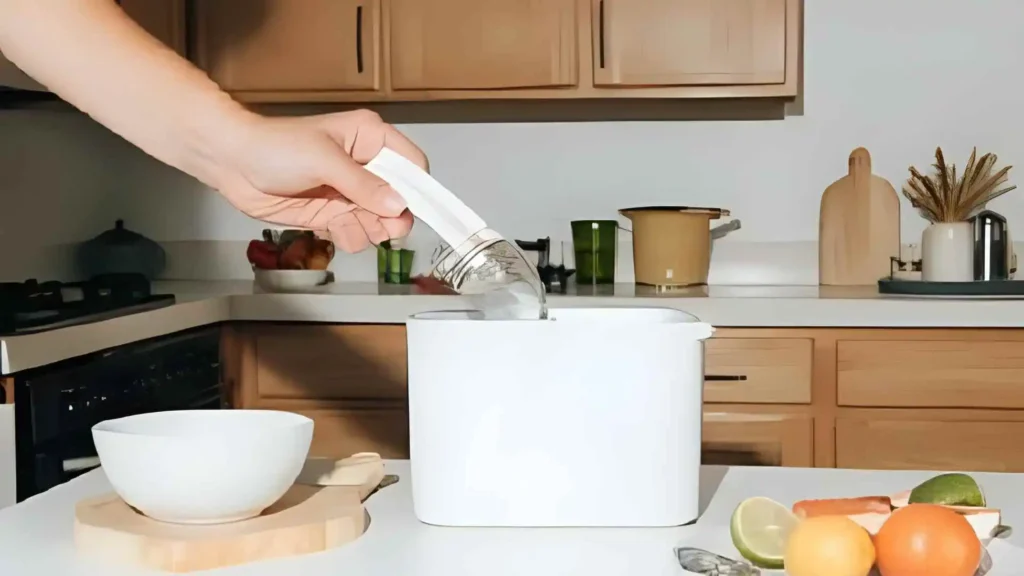
Before you can understand gallons, you need to understand ounces. This tiny unit has a big impact depending on whether you’re measuring liquids, dry goods, or weight.
Fluid Ounce (fl oz)
- Measures volume, not weight
- 1 U.S. fluid ounce = 29.5735 milliliters (ml)
- There are 128 fluid ounces in a U.S. liquid gallon
Dry Ounce
- Used for solid ingredients such as flour, sugar, or grains
- Conversion depends on density — 1 dry ounce of flour ≠ 1 dry ounce of sugar
- The U.S. dry gallon is roughly 148.9 U.S. fluid ounces
Ounce as Weight
- Commonly used in grams and pounds
- 1 ounce = 28.35 grams
- 16 ounces = 1 pound
⚖️ Example: A gallon of water weighs 8.34 pounds, while a gallon of oil weighs slightly less because it’s less dense.
How Many Ounces in a Gallon? (Exact Conversions)
Let’s get straight to the numbers — no guesswork here.
| Measurement Type | Gallon Type | Ounces | Liters | Notes |
| U.S. Liquid Gallon | 1 gal | 128 fl oz | 3.785 L | Common U.S. volume unit |
| Imperial Gallon | 1 gal | 160 fl oz | 4.546 L | Used in U.K., Canada |
| U.S. Dry Gallon | 1 gal | 148.946 fl oz (approx.) | 4.405 L | Used for dry goods |
Why 128 Fluid Ounces in a Gallon?
The U.S. system is based on the Queen Anne gallon, standardized in 1707. One gallon equaled 231 cubic inches, which breaks down to 128 ounces — a convenient number for splitting into quarts, pints, and cups.
Quick Breakdown
- 1 Gallon = 4 Quarts
- 1 Quart = 2 Pints
- 1 Pint = 2 Cups
- 1 Cup = 8 Ounces
So:
1 Gallon = 4 Quarts = 8 Pints = 16 Cups = 128 Ounces
Comprehensive Conversion Chart – Gallons ↔ Ounces ↔ Other Units
Here’s a simple conversion chart that works in the kitchen, lab, or classroom:
| U.S. Fluid Ounces | Cups | Pints | Quarts | Gallons |
| 8 fl oz | 1 cup | ½ pint | ¼ quart | 1/16 gal |
| 16 fl oz | 2 cups | 1 pint | ½ quart | 1/8 gal |
| 32 fl oz | 4 cups | 2 pints | 1 quart | ¼ gal |
| 64 fl oz | 8 cups | 4 pints | 2 quarts | ½ gal |
| 128 fl oz | 16 cups | 8 pints | 4 quarts | 1 gal |
Metric Conversion Table
| U.S. Gallons | Liters | Milliliters | Fluid Ounces |
| 0.25 gal | 0.946 L | 946 mL | 32 fl oz |
| 0.5 gal | 1.89 L | 1,890 mL | 64 fl oz |
| 1 gal | 3.785 L | 3,785 mL | 128 fl oz |
| 2 gal | 7.57 L | 7,570 mL | 256 fl oz |
📏 Tip: For scientific or international recipes, 1 U.S. gallon = 3.785 liters and 1 Imperial gallon = 4.546 liters.
Practical Uses of Ounce to Gallon Conversions
Understanding how to convert ounces to gallons is useful in many real-world settings.
In Cooking and Baking
Recipes may call for gallons of broth, soup, or juice — but your measuring cup only lists ounces.
For example:
If your recipe calls for 0.5 gallons of stock, that’s 64 fluid ounces.
In Brewing (Beer, Wine, Kombucha)
Brewers often mix gallons of liquid but measure ingredients in ounces.
- A 5-gallon homebrew batch = 640 fluid ounces
- A 2-gallon kombucha jar = 256 fluid ounces
In Health and Nutrition
If you’re trying to drink a gallon of water a day, that’s 128 ounces.
You can break it down like this:
- 4 bottles (32 oz each)
- 8 glasses (16 oz each)
- 16 cups (8 oz each)
In Science & Industry
Liquid chemicals or cleaning agents are often measured in gallons. Knowing ounce equivalents helps prevent costly mistakes.
The History Behind the Gallon and Ounce
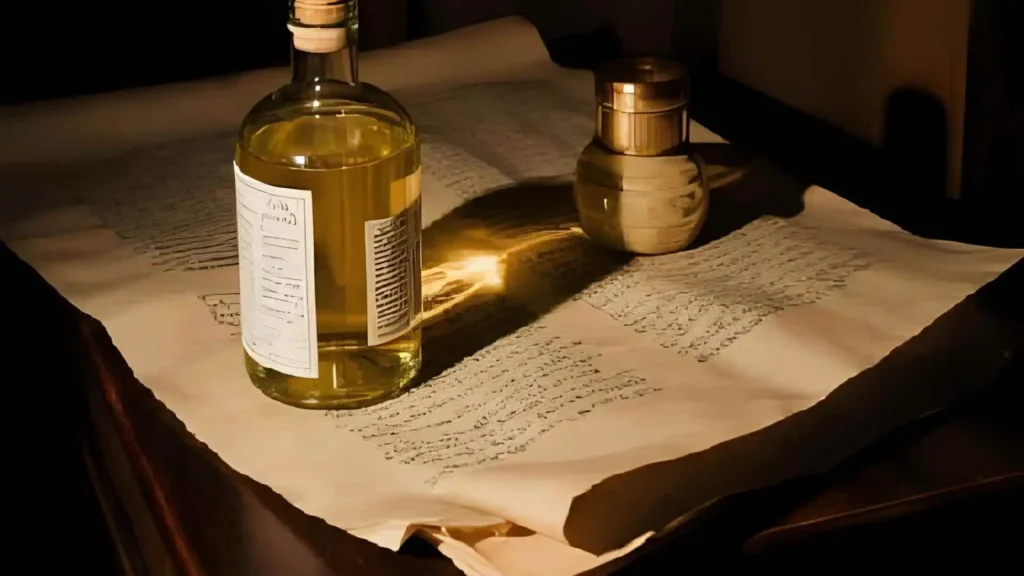
The words “gallon” and “ounce” have deep historical roots.
Origin of the Gallon
The term “gallon” comes from the Old French word “galon”, derived from Latin “gallēta” or “galleus”, referring to a liquid measure.
Historically, a gallon varied across regions — wine gallons, ale gallons, and corn gallons were all different sizes!
- Wine gallon (231 cubic inches) → became the U.S. gallon
- Ale gallon (282 cubic inches) → used in medieval England
- Imperial gallon (277.42 cubic inches) → standardized in 1824 in Britain
Origin of the Ounce
“Ounce” originates from the Roman term “uncia”, meaning one-twelfth of a whole.
Romans used it to measure both weight and volume, and the idea carried into Celtic and Gaulish traditions before being absorbed by English measurement systems.
🏺 Did You Know? The Apothecary system once used the ounce to measure medicines — 480 grains made one apothecary ounce.
Metric vs. Imperial vs. U.S. Customary Systems
Three major systems exist today, and understanding their differences helps avoid conversion blunders.
| System | Main Regions | Base Unit | Example |
| U.S. Customary System | United States, Liberia, Myanmar | U.S. gallon = 128 fl oz | 1 gal = 3.785 L |
| Imperial System | U.K., Canada, Australia | Imperial gallon = 160 fl oz | 1 gal = 4.546 L |
| Metric System | Most of the world | Liter (L) | 1 gal ≈ 3.785 L |
Comparing Gallons
- 1 Imperial gallon = 1.20095 U.S. gallons
- 1 U.S. gallon = 0.83267 Imperial gallons
Comparing Fluid Ounces
- 1 Imperial fluid ounce = 28.413 ml
- 1 U.S. fluid ounce = 29.573 ml
🌍 Example: A Canadian milk jug labeled “1 gallon” holds 4.546 liters, not 3.785 liters. That’s a 20% larger volume than the U.S. version.
Common Conversion Mistakes (And How to Avoid Them)
Even pros get tripped up by ounce-to-gallon conversions. Here’s what to watch out for:
Mistake 1: Confusing Fluid and Dry Ounces
A dry ounce measures weight; a fluid ounce measures volume. Always confirm which one your recipe uses.
Mistake 2: Mixing Imperial and U.S. Systems
A U.K. recipe may use an Imperial gallon, which is 20% larger than the U.S. gallon.
When in doubt, check for the country of origin or convert to liters.
Mistake 3: Forgetting Density
An ounce of water doesn’t equal an ounce of oil or honey. For accuracy, refer to grams or milliliters when precision matters.
FAQs About Ounces and Gallons
How many ounces in a half gallon?
- 64 U.S. fluid ounces
- 80 Imperial fluid ounces
How many ounces in a quart?
- 32 U.S. fluid ounces
- 40 Imperial fluid ounces
How many cups in a gallon?
- 16 U.S. cups
- 18.18 Imperial cups
Does a gallon of water weigh 128 ounces?
Not exactly. 128 ounces measures volume, not weight.
A gallon of water weighs 8.34 pounds (≈ 133.44 ounces by weight).
How many fluid ounces in a dry gallon?
About 148.946 U.S. fluid ounces.
Quick Reference: Common Kitchen Conversions
| Volume | U.S. Measurement | Imperial Measurement | Metric Equivalent |
| 1 cup | 8 fl oz | 10 fl oz | 236.6 mL |
| 1 pint | 16 fl oz | 20 fl oz | 473.2 mL |
| 1 quart | 32 fl oz | 40 fl oz | 946.4 mL |
| 1 gallon | 128 fl oz | 160 fl oz | 3.785 L (U.S.), 4.546 L (Imperial) |
Final Thought: Precision Matters
The next time someone asks “How many ounces are in a gallon?”, you’ll have the answer — and the context behind it.
Whether you’re working with imperial measurements, brewing beer, or following a metric recipe, understanding these conversions keeps your results consistent and your calculations spot-on.
🧠 Pro Tip: Bookmark or print a conversion chart for quick reference when switching between ounces, gallons, liters, and cups — it’ll save time and frustration.

James Wilson is a puzzle aficionado with a flair for storytelling and a passion for problem-solving. His expertise in a wide range of puzzles, from crosswords to logic puzzles, shines through in his compelling and informative articles. James’ ability to make puzzling both fun and accessible makes him a beloved member of the Puzzlerpedia team.
